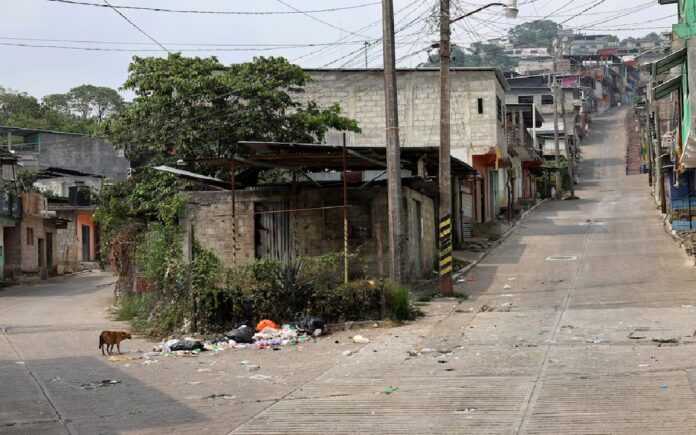Yajalon, Mexico: The tranquil streets of Tila, a quaint Mexican town nestled in the southern region, have turned eerily desolate following a harrowing three-day onslaught by heavily armed assailants. The aftermath? A ghost town, its residents driven away by fear and uncertainty, despite the presence of government troops now patrolling the deserted avenues.
All night we listened to bullets go by,” recounted Maria, a long-time inhabitant of Tila, situated approximately 140 miles away from Tuxtla Gutierrez, the capital of Chiapas state.
Eyewitnesses revealed that on the fateful night of June 4, a convoy of heavily armed men descended upon Tila, unleashing a barrage of gunfire, targeting homes, businesses, and even setting ablaze structures in their path. Subsequent days saw a chilling repetition of violence, with armed individuals clad in military garb terrorizing the town with high-caliber weapons.
The siege persisted until June 7, when the intervention of the army finally quelled the chaos. State authorities have since disclosed the deployment of around 5,000 troops to the area, accompanied by the apprehension of six suspects linked to the rampage.
In the wake of the turmoil, Tila’s populace, numbering around 4,000, fled en masse, seeking refuge in nearby shelters, where many remain, their slumber interrupted by makeshift bedding on bare floors.
Also Read | Heatwave Grips China as Asia Gears Up for Extreme Summer Conditions
“We are not going back,” asserted Saul, a 60-year-old merchant. “Until we know that when we leave our houses, they are not going to kill us.”
Accounts from fleeing residents paint a grim picture of the attackers, many of whom concealed their identities behind masks, with some appearing alarmingly young. Reports abound of looted stores, torched vehicles, and attempted break-ins, leaving behind a town shrouded in desolation, its streets strewn with charred remnants, shattered glass, and the pockmarks of gunfire.
The exodus from Tila mirrors a broader trend across Mexico, where communities, besieged by gang violence, witness a steady emigration of asylum seekers bound for the relative safety of the United States.
Also Read | Dutch Military Intelligence: Chinese Cyber Espionage Surpasses Initial Estimates
While official narratives attribute the violence in Tila to a localized land dispute, residents offer a starkly different perspective. They recount years of extortion and intimidation at the hands of organized crime syndicates, who exacted ruthless retribution upon those who failed to comply with their demands.
“For months, anyone who did not pay was killed,” Maria disclosed from her temporary shelter in Yajalon, located some 20 miles away. “They threatened to recruit young people, to rape women, and that’s why we left.”
With each passing year, residents note a palpable escalation in violence, coupled with a surge in drug trafficking and extortion—a reality that belies the idyllic facade of their once-peaceful town.
Also Read | Warner Bros Discovery’s TNT Sports Secures 10-Year Deal to Broadcast French Open in the U.S.
As Mexico braces for the impending presidency of Claudia Sheinbaum, slated to assume office in October, promises to combat extortion resonate deeply within communities grappling with the specter of organized crime. Yet, the battle against drug cartels, vying for dominance in lucrative markets, remains an ongoing struggle.
Once considered a bastion of tranquility, Chiapas now finds itself ensnared in a deadly turf war between rival cartels—the Jalisco New Generation Cartel (CJNG) and the Sinaloa Cartel—prompting a mass exodus of inhabitants fleeing the pervasive violence and extortion.
“They burned both of my houses,” lamented another Tila resident. “We are waiting for the authorities to take serious measures.”



